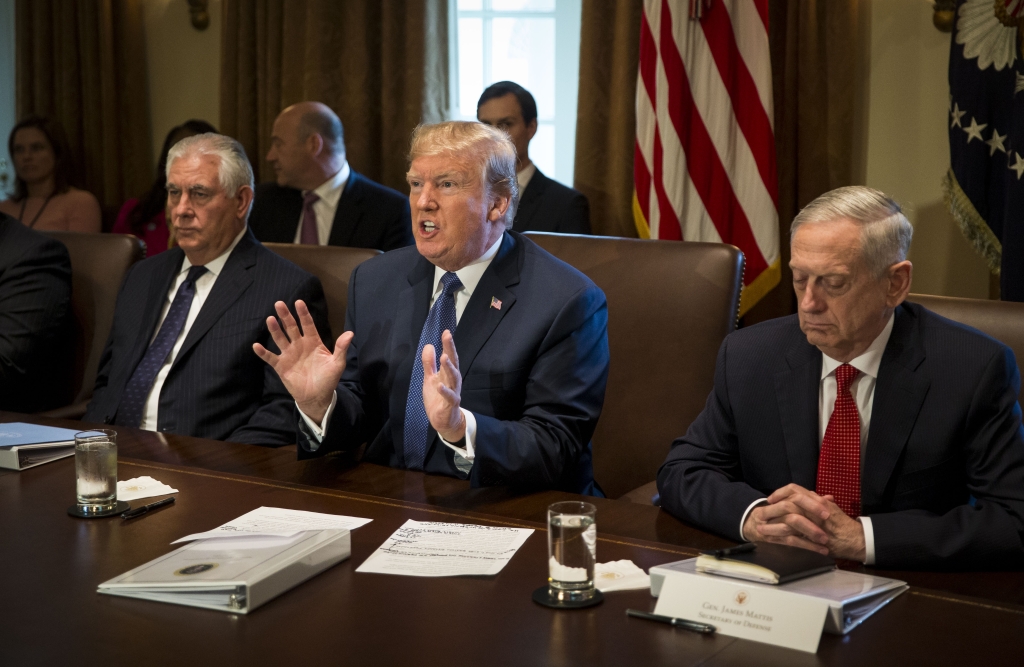On Dec. 4, U.S. Defense Secretary James Mattis made a quick trip to Islamabad. His whirlwind visit did little to ease the current tensions in U.S.-Pakistan relations.
Islamabad is smarting about Washington’s new South Asia strategy, which demands Pakistan stop supporting militants on its soil — a demand Mattis reiterated on his trip — and calls on India to step up its role in Afghanistan.
The Donald Trump administration’s strategy, announced in August, vows to take punitive steps against Pakistan if it doesn’t shut down terrorist safe havens. If history is any guide, Islamabad won’t comply. This sets the stage for potential fireworks in bilateral relations in the coming months that could lead to a new low in relations.
What do plummeting U.S.-Pakistan ties portend for India?
First, it’s an obvious net positive for India that its bitter enemy’s ties with the world’s sole superpower are tanking. Pakistan derives ample benefits — material support but also prestige — from its powerful American partner. If Islamabad is deprived of such benefits, or if these benefits are reduced, then that’s a clear triumph for New Delhi.
Additionally, as Teresita Schaffer and the late Howard Schaffer explain in their landmark study about how Pakistan negotiates with America, Islamabad wants Washington to give equal treatment to both Pakistan and India. With U.S.-Pakistan relations suffering and U.S.-India relations soaring, this goal has never appeared more elusive. This is a blow to Pakistan and a corresponding boon for India.
Another positive for India is that Washington has stronger incentives to take risks.
In effect, it can worry less about offending Pakistani sensitivities. This means the U.S may be more inclined to help New Delhi boost its capacities to combat anti-India terror groups in Pakistan — including, perhaps, by providing India with drones and other technologies that better enable it to covertly target its non-state nemeses across the border.
On the other hand, a fraying U.S.-Pakistan relationship may prove disappointing for India. For one thing, the partnership is unlikely to completely fall apart.
The Wilson Center, in collaboration with the Regional Peace Institute in Islamabad, has been overseeing a U.S.-Pakistan Track II dialogue over the last year, and not one of the dozens of participants has indicated a desire to let the relationship wither away.
Indeed, despite all the tensions, mistrust, and divergent interests, both sides still have incentives to remain reluctant partners. For Washington, there’s a need for continued access to Pakistan-based NATO supply routes that serve U.S. forces in Afghanistan. America also continues to greatly value Pakistani intelligence support to help target al-Qaeda and ISIS in the region. For Islamabad, military assistance and the prestige of maintaining a partnership with a great power are major perks that are tough to relinquish.
In effect, when it comes to U.S. policy toward Pakistan, Washington’s risk threshold may increase, but its interest in continued cooperation— no matter how limited — ensures there will still be red lines for risk-taking.
Think of it this way: The White House may be willing to provide drone technology to India, but don’t expect Washington itself to drop a drone on Hafiz Saeed.
Speaking of Saeed, even amid sputtering U.S.-Pakistan relations and surging U.S.-India relations, Washington will continue to prioritize the elimination of anti-Afghanistan militants over the anti-India ones. This was made crystal clear last month when the U.S. government delinked Lashkar-e-Taiba (LeT) — but not the Haqqani Network or any other Afghanistan-focused terror group — from aid certification requirements.
It’s easy to understand this prioritization. As a senior White House South Asia official told our Track II participants in a private briefing back in August, the main objective of Trump’s Pakistan policy is to protect American lives. The Afghan Taliban and Haqqani Network, which regularly stage attacks in a country where U.S. troops are fighting a war, pose a more clear and present danger to Americans than do LeT and its India-focused ilk.
Saeed’s recent release from house arrest and the emergence of the LeT-linked Milli Muslim League political party are a wake-up call to the White House about the continued dangers of LeT. Additionally, LeT has a presence in Afghanistan. The Pakistani security establishment, in part to avoid invoking American wrath, has kept LeT on a tight leash in recent years. But with the U.S.-Pakistan relationship on the rocks, Pakistan could in due course loosen its grip on that leash, thereby enabling the group to do more damage in Afghanistan. And that should be an alarming thought for the United States.
Still, for now, Washington’s core focus will remain the militants waging insurgency and terror against American troops in Afghanistan.

And yet there’s another story to tell here.
Much ink has been spilled about the bad blood in U.S.-Pakistan and India-Pakistan relations, the warming U.S.-India partnership, and how each of these relationships affects the other.
Forgotten amid all this talk is that the U.S.-India-Pakistan relationship is more than an angry triangle. Indeed, there’s also a modest degree of quiet coexistence.
India and Pakistan continue to cooperate in several U.S.-supported initiatives — from the Indus Waters Treaty to the newer Turkmenistan-Afghanistan-Pakistan-India pipeline.
Our Track II dialogue has highlighted the potential for three-way cooperation — including opportunities for Washington to facilitate deeper India-Pakistan trade and to help avert the next India-Pakistan conflict.
To be sure, this won’t ever be mistaken for anything remotely approximating a grand trilateral alliance. But it does serve as a useful reminder that U.S.-India-Pakistan relations need not be perceived exclusively through a zero-sum lens.
Michael Kugelman is deputy director for the Asia Program and senior associate for South Asia at the Woodrow Wilson International Center for Scholars in Washington, DC.
The views expressed here are those of the author’s and do not necessarily represent the views of BloombergQuint or its editorial team.
